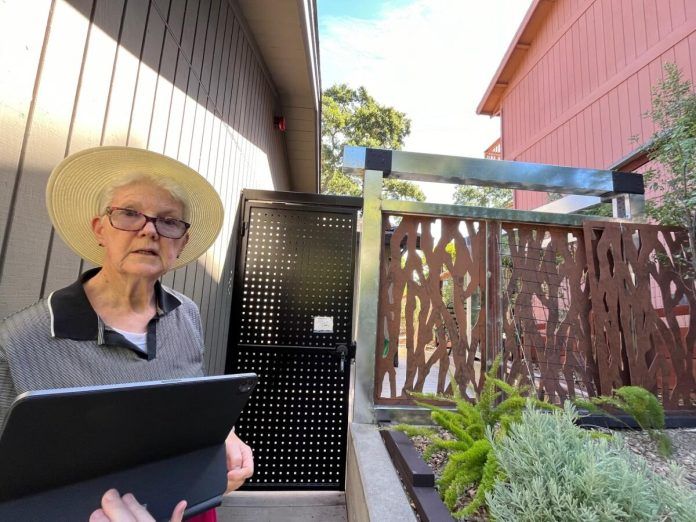California is chipping away at developing new statewide rules to remove plants, mulch and other flammable materials within 5 feet of buildings and structures in fire-prone areas, the Board of Forestry confirmed this month. This proposed set of guidelines would also forbid that ubiquitous backyard feature — a wooden privacy fence. This rule lumps existing flammable fences into the same category as new construction.
“We’re already getting calls on that,” Arbor Fence Manager Cassidy Everitt said. The Sonoma fence construction company uses redwood in at least 75% of its business, estimated Everitt. Customers who ask to replace their wooden fences may request metal, tin or chain-link versions. But in doing so, Everitt has found a critical consideration — getting neighbour buy-in. “And neighbours are almost never on the same page,” she said.
No date is set on when the upcoming defensible space guidelines will be finalised or implemented, California Board of Forestry spokeswoman Edith Hannigan said. Insiders say it’s only a matter of time when insurance companies make the changes mandatory. And in a state undergoing an insurance crisis, property owners need all the assistance they can get to keep their policies intact and affordable. The state is in the process of putting together a plan that will keep insurance companies engaged in insuring properties here.
The proposed defensible space rules, which Cal Fire is intended to enforce, are designed to minimise the fire danger of embers that land close to a structure. State officials contend that, of 20 of the most destructive wildfires in California’s recorded history, 13 of them occurred since 2017, destroying about 40,000 structures, charred millions of acres of land and claimed 148 lives.
The proposal was created by the National Fire Protection Association, a Quincy, Massachusetts-based nonprofit, and the Insurance Institute for Business and Home Safety, an industry trade group in Tampa, Florida, that uses a simulator as means to research adequate home-hardening measures.
Most California property owners susceptible to blazing infernos such as those in the North Bay are familiar with broader defensible space guidelines at the 30- to 100-foot perimeter.
The “5-foot rule” carries a whole other set of restrictions beyond 5 to 30 feet. Deemed Zone 1, the current zero-to-30-foot guidelines prohibit dead and dying grass, plants, shrubs, trees, branches, leaves, weeds and pine needles. At 10 feet away, all branches must be cleared from chimney and stove pipe outlets. Zone 2, which encompasses 30 to 100 feet, defines an area with more open space between shrubs and trees labelled the “fuel separation” method. The Board of Forestry’s latest zone referred to as “zone zero,” also bans wood piles within 5 feet. The rules are being drafted now.








